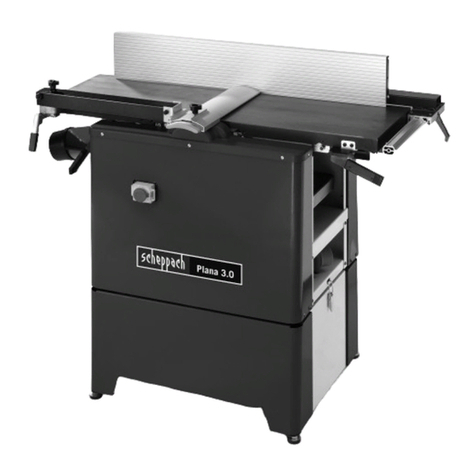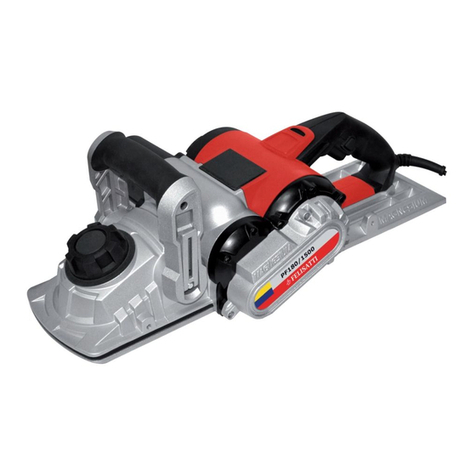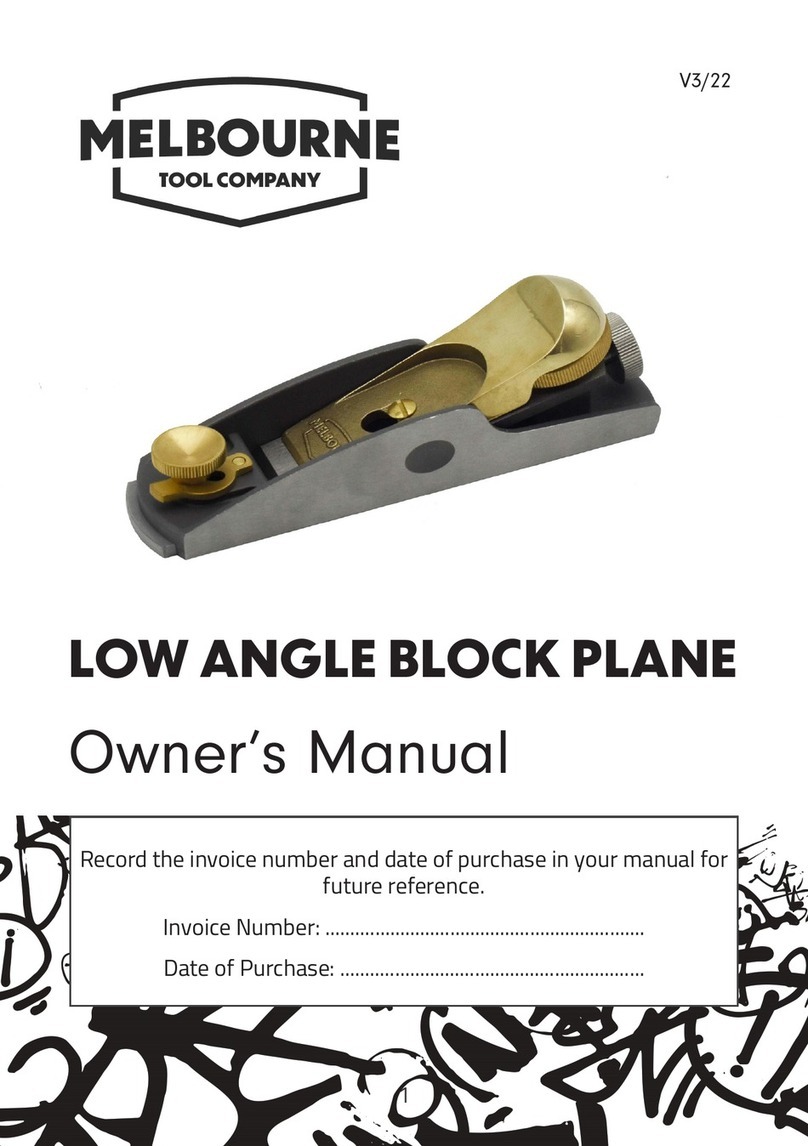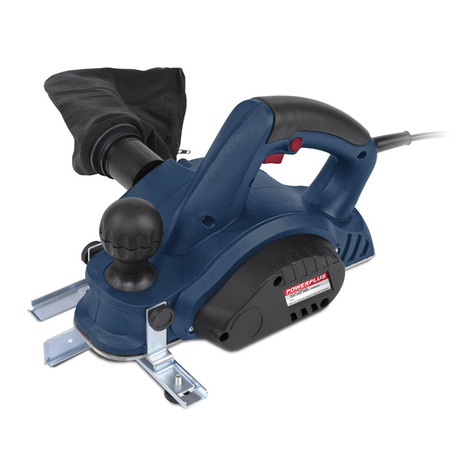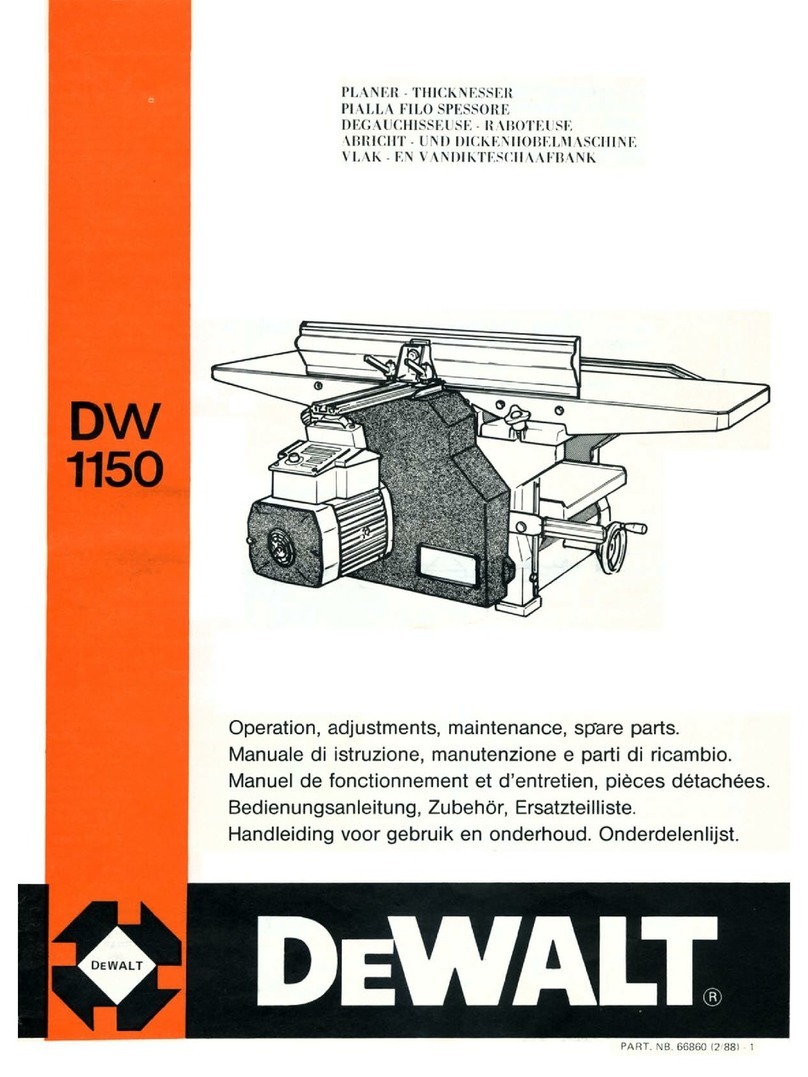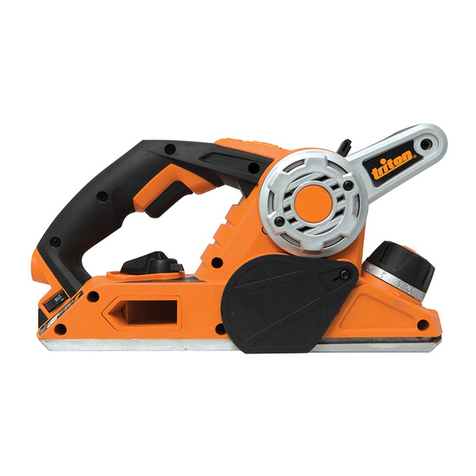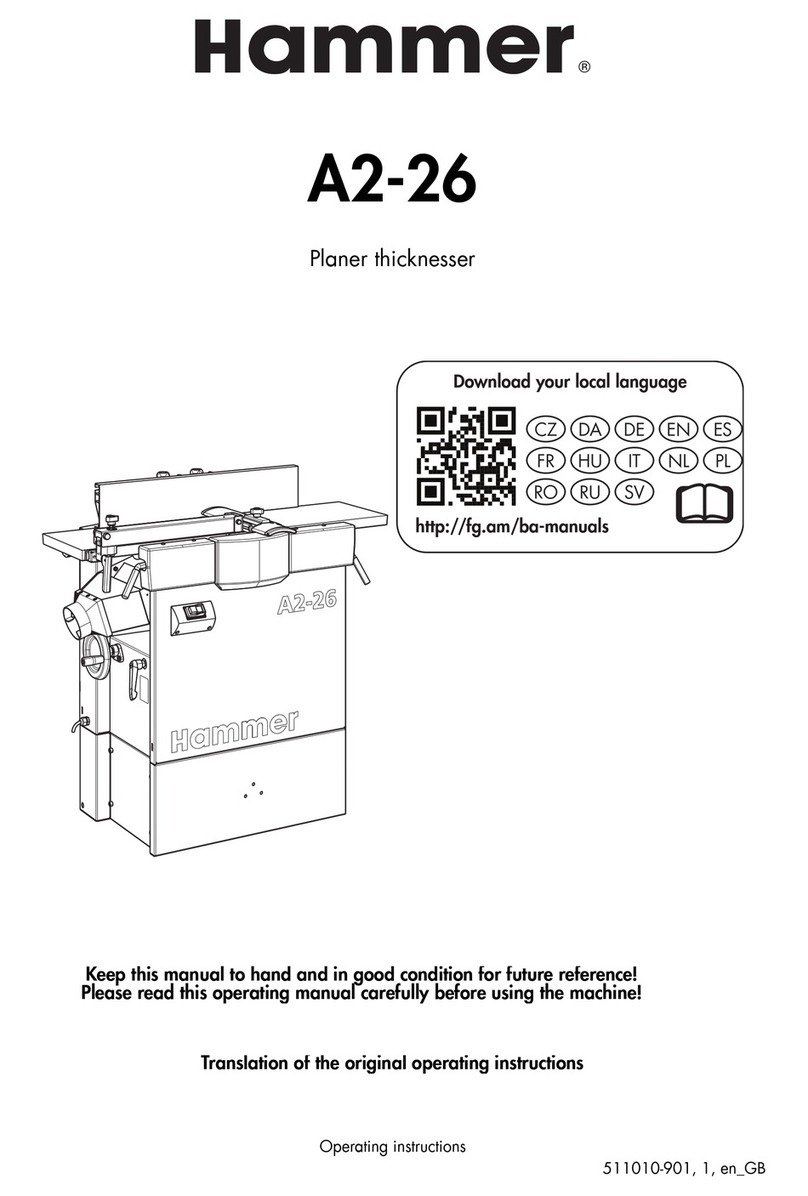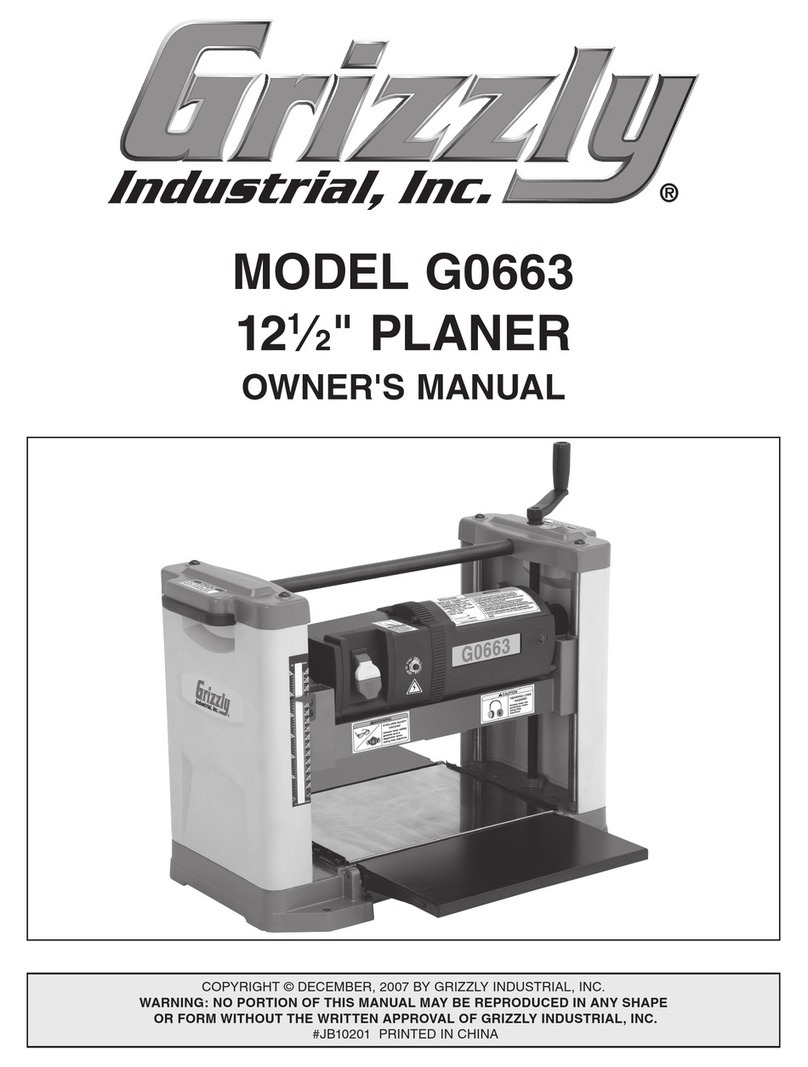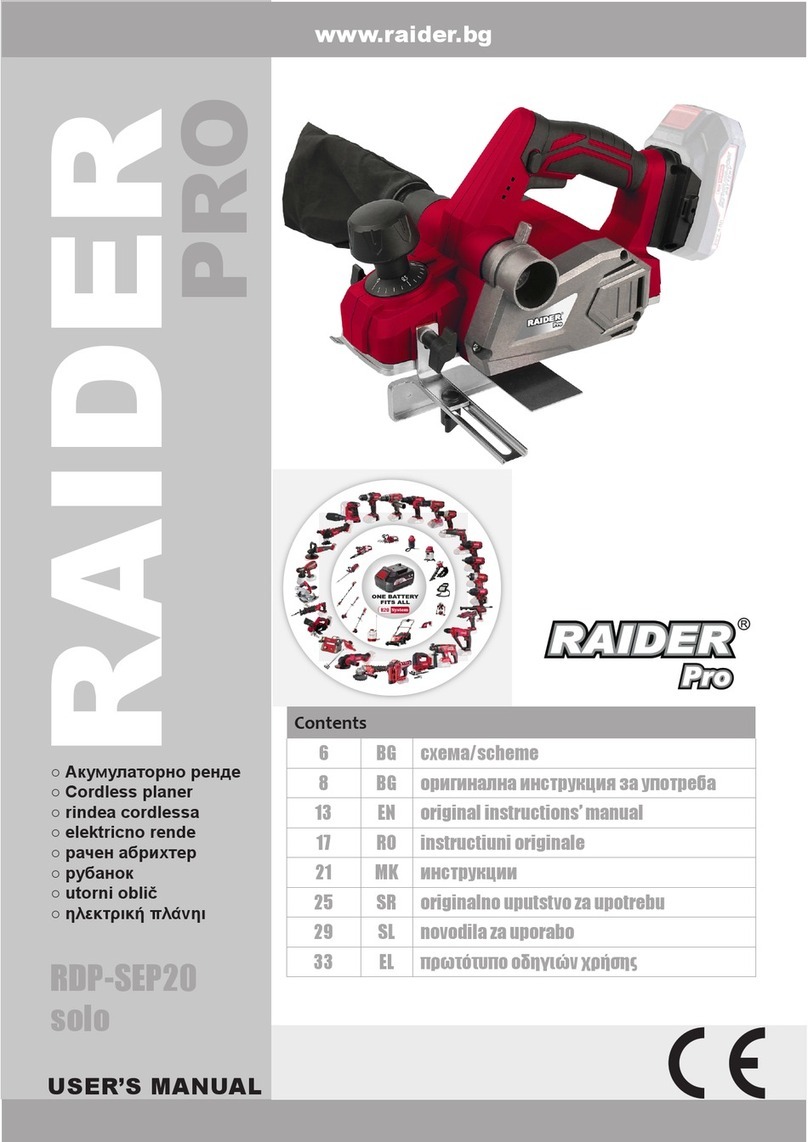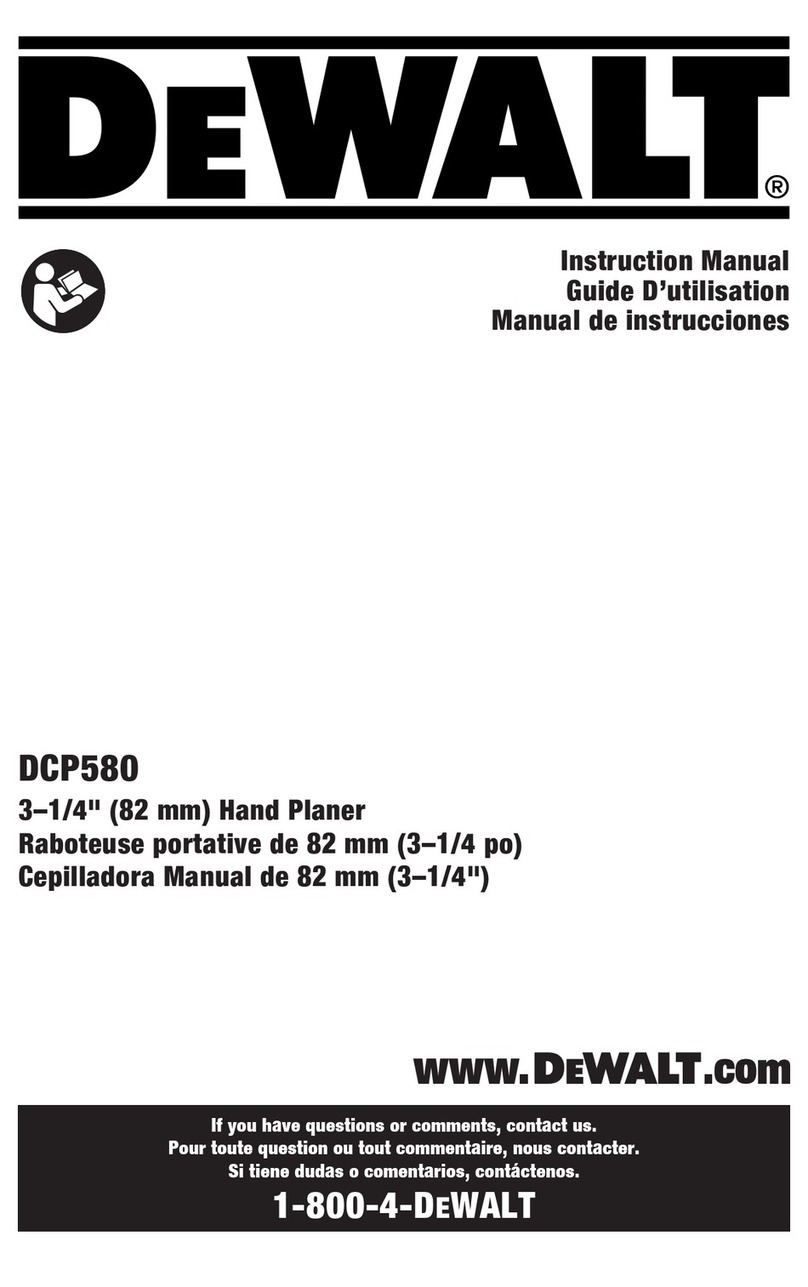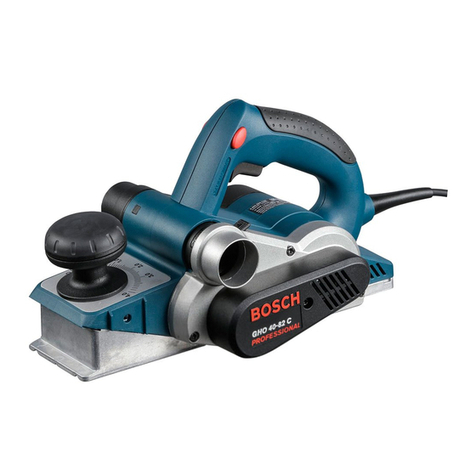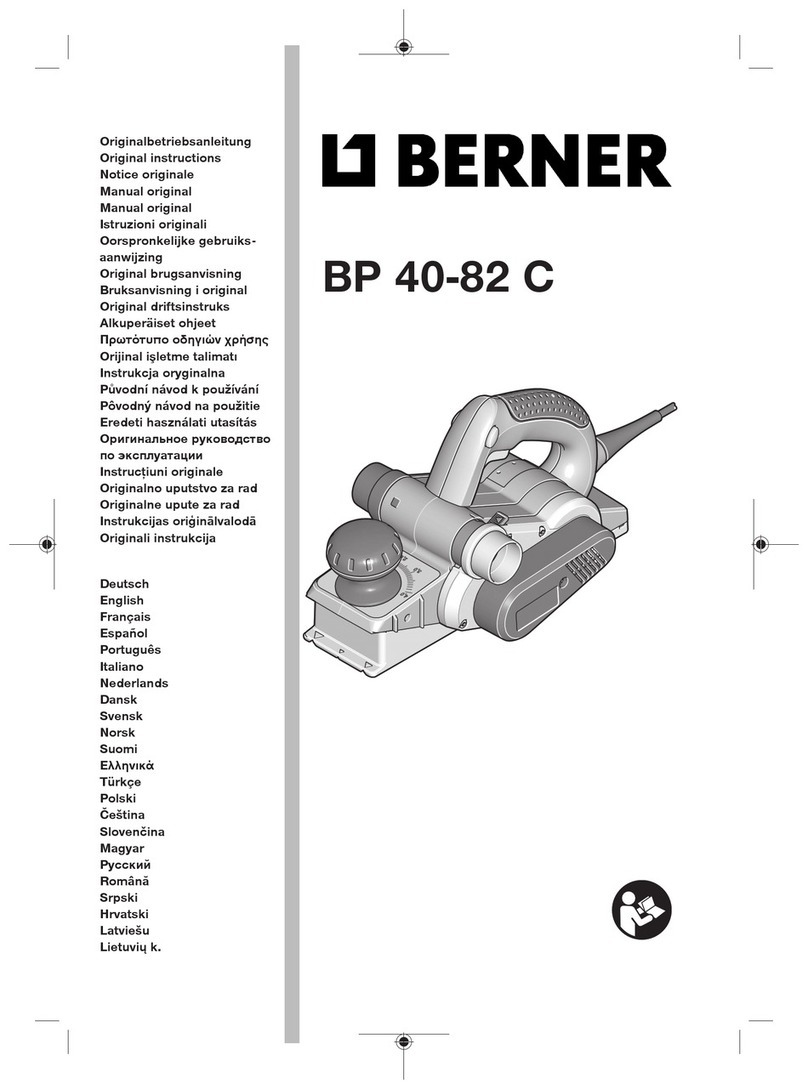
2
For your own safety, read the instruction manual1. before operating the machine. Learning the machine’s
application, limitations, and specific hazards will greatly
minimize the possibility of accidents and injury.
Wear eye and hearing protection and always use2. safety glasses. Everyday eyeglasses are not safety
glasses. Use certified safety equipment. Eye protection
equipment should comply with ANSI Z87.1 standards.
Hearing equipment should comply with ANSI S3.19
standards.
Wear proper apparel.3. Do not wear loose clothing, gloves,
neckties, rings, bracelets, or other jewelry which may get
caught in moving parts. Nonslip protective footwear is
recommended. Wear protective hair covering to contain
long hair.
Do not use the machine in a dangerous environment.4. The use of power tools in damp or wet locations or in rain
can cause shock or electrocution. Keep your work area
well-lit to prevent tripping or placing arms, hands, and
fingers in danger.
Do not operate electric tools near flammable liquids5. or in gaseous or explosive atmospheres. Motors and
switches in these tools may spark and ignite fumes.
Maintain all tools and machines in peak condition.6. Keep tools sharp and clean for best and safest
performance. Follow instructions for lubricating and
changing accessories. Poorly maintained tools and
machines can further damage the tool or machine and/or
cause injury.
Check for damaged parts.7. Before using the machine,
check for any damaged parts. Check for alignment of
moving parts, binding of moving parts, breakage of parts,
and any other conditions that may affect its operation.
A guard or any other part that is damaged should be
properly repaired or replaced with SCTW or factory
authorized replacement parts.Damaged parts can cause
further damage to the machine and/or injury.
Keep the work area clean.8. Cluttered areas and benches
invite accidents.
Keep children and visitors away.9. Your shop is a
potentially dangerous environment. Children and visitors
can be injured.
Reduce the risk of unintentional starting.10. Make sure
that the switch is in the “OFF” position before plugging in
the power cord. In the event of a power failure, move the
switch to the “OFF” position. An accidental start-up can
cause injury. Do not touch the plug’s metal prongs when
unplugging or plugging in the cord.
Use the guards.11. Check to see that all safety devices are
in place, secured, and working correctly to prevent injury.
Remove adjusting keys and wrenches before starting12. the machine. Tools, scrap pieces, and other debris can
be thrown at high speed, causing injury.
Use the right machine.13. Don’t force a machine or an
attachment to do a job for which it was not designed.
Damage to the machine and/or injury may result.
Use recommended accessories.14. The use of accessories
and attachments not recommended by SCTW may cause
damage to the machine or injury to the user.
Use the proper extension cord.15. Make sure your
extension cord is in good condition. When using an
extension cord, be sure to use one heavy enough to carry
the current your product will draw. An undersized cord
will cause a drop in line voltage, resulting in loss of power
and overheating. See the Extension Cord Chart for the
correct size depending on the cord length and nameplate
ampere rating. If in doubt, use the next heavier gauge.
The smaller the gauge number, the heavier the cord.
Secure the workpiece.16. Use clamps or a vise to hold the
workpiece when practical. Loss of control of a workpiece
can cause injury.
Feed the workpiece against the direction of the17. rotation of the blade, cutter, or abrasive surface.
Feeding it from the other direction will cause the
workpiece to be thrown out at high speed.
Don’t force the workpiece on the machine.
18. Damage to
the machine and/or injury may result.
Don’t overreach.19. Loss of balance can make you fall into
a working machine, causing injury.
Never stand on the machine.20. Injury could occur if the
tool tips, or if you accidentally contact the cutting tool.
Never leave the machine running unattended.21. Turn
the power off. Don’t leave the machine until it comes to a
complete stop. A child or visitor could be injured.
Turn the machine “22. OFF”, and disconnect the machine
from the power source before installing or removing
accessories, changing cutters, adjusting or changing
set-ups. When making repairs, be sure to lock the start
switch in the “OFF” position. An accidental start-up can
cause injury.
Make your workshop childproof with padlocks, master23. switches, or by removing starter keys. The accidental
start-up of a machine by a child or visitor could cause
injury.
Stay alert, watch what you are doing, and use24. common sense. Do not use the machine when you
are tired or under the influence of drugs, alcohol, or
medication. A moment of inattention while operating
power tools may result in injury.
25. Use of this tool can generate and
disperse dust or other airborne particles, including
wood dust, crystalline silica dust and asbestos dust.
Direct particles away from face and body. Always operate
tool in well ventilated area and provide for proper dust
removal. Use dust collection system wherever possible.
Exposure to the dust may cause serious and permanent
respiratory or other injury, including silicosis (a serious
lung disease), cancer, and death. Avoid breathing the
dust, and avoid prolonged contact with dust. Allowing
dust to get into your mouth or eyes, or lay on your skin
may promote absorption of harmful material. Always
use properly fitting NIOSH/OSHA approved respiratory
protection appropriate for the dust exposure, and wash
exposed areas with soap and water.
GENERAL SAFETY RULES
Failure to follow these rules may result in serious personal injury.WARNING:
WARNING:
